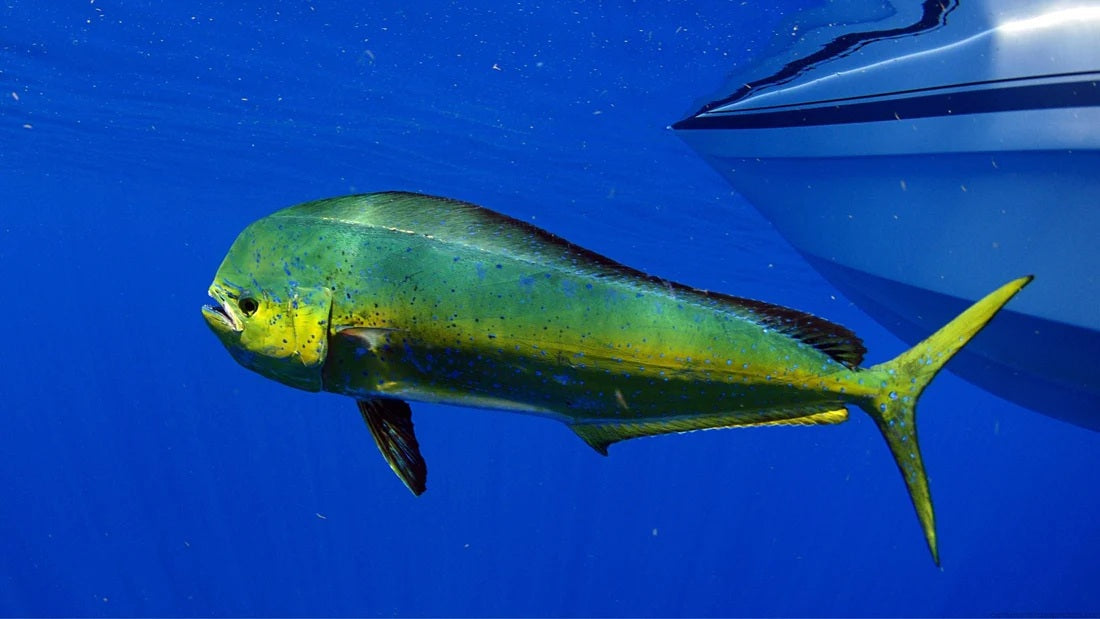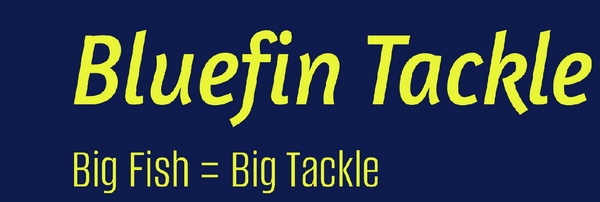
The Ultimate Guide to Mahi Mahi Fishing
Share
Mahi Mahi, also known as dolphinfish or dorado, is one of the most sought-after species in saltwater sport fishing. Their vibrant colors, acrobatic fights, and delicious taste make them a favorite target for both seasoned anglers and newcomers to offshore fishing. Few fish combine beauty, excitement, and table quality the way Mahi Mahi do. If you’ve ever seen one leap out of the water shimmering with electric blues, yellows, and greens, you’ll understand why this species is considered one of the crown jewels of the ocean.
In this comprehensive guide, we’ll dive into everything you need to know about Mahi Mahi fishing: their biology, habitats, the best seasons, gear recommendations, effective techniques, and expert tips to maximize your chances of landing these incredible fish. Whether you’re trolling offshore waters or casting near floating debris, this guide will prepare you for success.

Understanding Mahi Mahi
Before you can consistently catch a species, it helps to understand how it lives and behaves.
Scientific Background
* Scientific name: Coryphaena hippurus
* Common names: Mahi Mahi (Hawaiian), Dolphinfish, Dorado (Spanish)
* Average size: 15–30 pounds, though specimens exceeding 50–70 pounds are not unheard of
* Growth rate: Extremely fast, reaching maturity within 4–5 months
* Lifespan: Rarely more than 4–5 years
Mahi Mahi are among the fastest-growing fish in the ocean. Their rapid growth and early maturity make them a resilient species that can withstand heavy fishing pressure compared to slower-growing species like marlin or tuna.
Appearance
Mahi Mahi are instantly recognizable thanks to their dazzling colors. When alive, they display electric shades of blue, green, and yellow that fade quickly after death. Males, called “bulls,” have prominent square-shaped foreheads, while females, called “cows,” have more rounded heads.
Feeding Habits
Mahi Mahi are opportunistic carnivores that feed primarily on small fish, squid, and crustaceans. They’re known to follow schools of flying fish and will aggressively strike at bait or lures, making them thrilling to catch.
Where to Find Mahi Mahi
Mahi Mahi thrive in warm tropical and subtropical waters around the world.
Prime Locations
* Atlantic Ocean: Off the coasts of Florida, the Bahamas, the Gulf of Mexico, and the Caribbean islands
* Pacific Ocean: Hawaii, Costa Rica, Mexico’s Baja California, Panama, and Ecuador
* Indian Ocean: Maldives, Seychelles, and East Africa
They’re pelagic fish, meaning they live in open water rather than hugging the coastline. However, they’re strongly associated with floating objects, weed lines, and debris, which attract the baitfish they feed on.
Offshore Structure
When searching for Mahi Mahi, keep an eye out for:
* Sargassum weed lines – floating mats of seaweed that provide food and shelter for baitfish
* Floating debris – anything from logs to buoys can hold fish beneath them
* Temperature breaks – areas where warm and cool currents meet often hold bait and attract predators
* Bird activity – diving birds are a strong indicator of feeding Mahi nearby
Best Season for Mahi Mahi
Mahi Mahi can be caught year-round in some areas, but their peak seasons vary by region.
* Florida & Gulf of Mexico: Spring through late summer is best
* Caribbean: Year-round with peaks in spring and summer
* Hawaii: Productive year-round, though late spring through fall often produces larger fish
* Pacific Coast (Costa Rica, Panama, Mexico): November through April, coinciding with dry season offshore fishing
Timing your trip during these peak windows increases your chances of encountering big schools of Mahi Mahi.
Gear and Tackle for Mahi Mahi Fishing
One of the great things about Mahi Mahi fishing is that it doesn’t require overly heavy tackle compared to other big game species. Still, you’ll want gear that’s strong enough to handle their acrobatic fights and fast runs.
Rods and Reels
* Rods: Medium-heavy saltwater trolling or spinning rods, 6.5–7 feet in length
* Reels: High-capacity saltwater spinning or conventional reels with smooth drag systems
* Line: 30–50 lb. braided line with a 40–60 lb. fluorocarbon leader
Hooks and Terminal Tackle
* Hooks: 5/0–7/0 circle hooks for natural bait, strong J-hooks for trolling lures
* Leaders: 4–6 feet of fluorocarbon for stealth; wire leaders usually unnecessary since Mahi aren’t toothy
* Swivels: High-quality ball-bearing swivels to reduce line twist during trolling
Best Baits for Mahi Mahi
Mahi Mahi are aggressive feeders and will hit a wide range of natural and artificial baits.
Live and Dead Baits
* Ballyhoo – one of the most popular trolling baits
* Flying fish – a natural favorite
* Squid – excellent when chunking or drifting
* Mullet, sardines, pilchards – effective live bait options
Artificial Lures
* Skirted trolling lures – bright colors like pink, green, and blue mimic squid and flying fish
* Feathers and jet heads – great for fast trolling
* Topwater plugs and poppers – ideal for casting to surface-feeding Mahi
* Soft plastics – rigged with jig heads or weedless hooks
The key with lures is speed, color, and presentation. Mahi Mahi respond well to flashy, fast-moving offerings that mimic their prey.
Effective Techniques for Catching Mahi Mahi
1. Trolling
Trolling is the most common and productive way to locate and catch Mahi Mahi in offshore waters. Run multiple lines behind the boat with a mix of skirted baits, rigged ballyhoo, and surface lures. Speeds of 5–8 knots are ideal.
2. Casting to Floating Objects
Once you locate debris or weed lines, approach quietly and cast lures or live bait around the structure. Mahi often school in large numbers under floating cover.
3. Chumming and Drifting
Chumming with cut bait like sardines or squid can bring schools of Mahi close to the boat. Once they’re feeding, drift live or chunk baits into the slick for nonstop action.
4. Run and Gun
This technique involves spotting bird activity or surface-feeding fish and racing the boat into casting range. Quick casts with topwater plugs or jigs can trigger explosive strikes.
Fighting and Landing Mahi Mahi
Mahi Mahi are famous for their acrobatic fights. Expect wild leaps, blistering runs, and sudden changes in direction. Keep a steady pressure, let the drag do its work, and avoid “high sticking” the rod tip to prevent break-offs.
When landing Mahi, a long-handled gaff is often necessary, especially for larger fish. Smaller fish can sometimes be lifted with the rod or a landing net.
Keeping the Bite Going
One of the best things about Mahi Mahi is that they often travel in schools. If you hook one, keep it in the water near the boat to attract others. Quickly cast additional lines with bait or lures, and it’s common to hook multiple fish at once.
Culinary Value
Few fish rival Mahi Mahi on the dinner table. Their firm, white flesh is mild and versatile, perfect for grilling, baking, or searing. Popular dishes include Mahi tacos, grilled fillets, and citrus-marinated ceviche.
Conservation and Sustainability
While Mahi Mahi are relatively abundant due to their fast growth rates, sustainable fishing practices are still important. Use circle hooks to reduce deep hooking, respect local size and bag limits, and avoid waste. Many anglers release smaller fish to allow them to mature and reproduce.
Expert Tips for Mahi Mahi Success
1. Match the hatch – use lures and baits that mimic local prey.
2. Stay mobile – if you’re not finding fish, move to new areas with structure or bird activity.
3. Use bright lures – Mahi respond to flashy colors like pink, green, and chartreuse.
4. Keep a rod ready – always have a casting rod rigged for when fish suddenly appear near the boat.
5. Don’t overthink leader size – 40–60 lb. fluorocarbon strikes the right balance between strength and invisibility.
The Thrill of Mahi Mahi Fishing
Ask any angler who has battled a Mahi Mahi, and they’ll describe it as one of the most exciting experiences in sport fishing. From the moment you spot their neon colors flashing under a weed line to their spectacular leaps above the waves, Mahi fishing delivers adrenaline-pumping action. Add their excellent food quality, and it’s no wonder they’re among the most prized catches in tropical waters worldwide.
Conclusion
Mahi Mahi fishing is the perfect blend of challenge, reward, and pure fun. These fish are abundant, aggressive, and widely distributed, making them accessible to anglers in many parts of the world. With the right gear, techniques, and knowledge of their behavior, you can consistently find and catch Mahi Mahi.
Whether you’re trolling offshore, casting near floating debris, or drifting live bait over weed lines, every trip targeting these colorful predators offers a chance at heart-pounding action. And when the fight is over, the reward of fresh, delicious fillets makes the experience even sweeter.
If you’re looking for an offshore adventure that combines beauty, power, and great eating, look no further than the dazzling, acrobatic Mahi Mahi.
